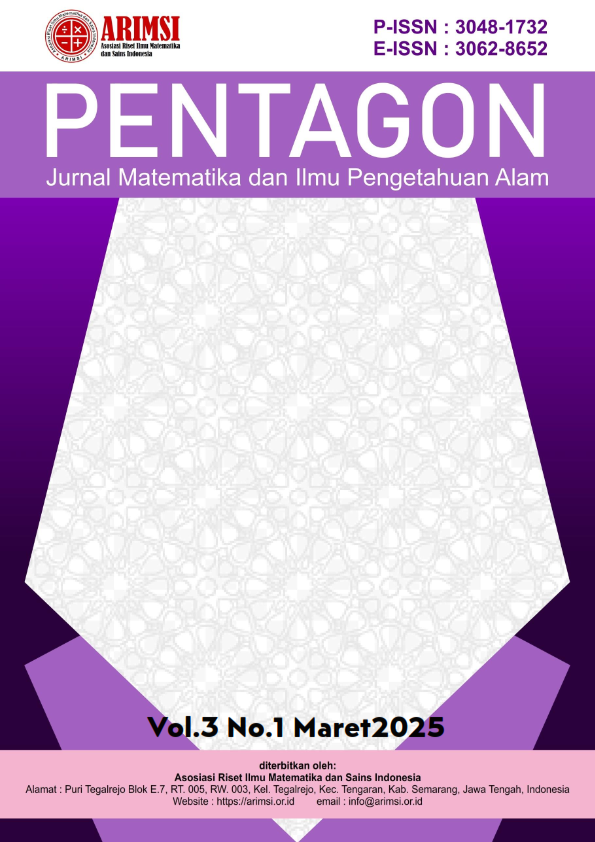Mini Tinjauan Literatur Pemanfaatan Software Triangulos untuk Berpikir Komputasi Siswa
DOI:
https://doi.org/10.62383/pentagon.v3i2.544Keywords:
Computational Thinking, Geometry, Learning Technology, Mathematics, TriangulosAbstract
Computational thinking skills are now one of the main skills in 21st century education. Not only does it support mastery of technology, this ability is also very important in understanding and solving problems systematically. This study aims to review in depth the potential for utilizing Triangulos software as an innovative learning medium to improve students' computational thinking skills, especially in mathematical geometry material. The study used a literature review approach by tracing primary and secondary sources from 2020–2024. The results of the analysis show that the use of Triangulos can encourage students to develop algorithmic thinking patterns, spatial visualization, and problem-solving skills. In addition, this application also supports independent and collaborative learning, and has the potential to increase student motivation and activeness in class. These findings recommend the integration of Triangulos in mathematics learning as one of the efforts to innovate education in the digital era. Further empirical research is highly recommended to test the effectiveness of this application at various levels of education.
Downloads
References
Amelia, R. & Hidayat, T. (2020). Implementasi Media Interaktif untuk Meningkatkan Keterampilan Berpikir Kritis dan Komputasional. Prosiding SNMPM.
Baranová, K., & Katreničová, A. (2018). The use of dynamic geometry software in mathematics education. Journal of Technology and Information Education, 10(1), 62–70.
Kemendikbud. (2023). Survei pemanfaatan teknologi dalam pembelajaran di Indonesia. Jakarta: Kemendikbud RI.
Mufidah, I. (2018). Profil berpikir komputasi dalam menyelesaikan Bebras task ditinjau dari kecerdasan logis matematis siswa. Surabaya: UIN Sunan Ampel.
Putri, N. K., & Arifin, Y. (2021). Penggunaan software visual dalam pembelajaran geometri interaktif. Seminar Nasional Teknologi Pendidikan, 5(1), 45–50.
Siregar, L. & Rahmat, N. (2021). Pengembangan Media Berbasis Geometri Digital dalam Pembelajaran Matematika. Jurnal Pendidikan Matematika dan Sains, 6(1), 33–40.
Syaharudin, S., & Abdila, R. (2018). Pengaruh media pembelajaran berbasis teknologi terhadap hasil belajar matematika. Jurnal Pendidikan Matematika, 3(2), 120–128.
Wing, J. M. (2006). Computational thinking. Communications of the ACM, 49(3), 33–35.
Yulianti, D., & Prasetyo, Z. K. (2022). Analisis kebutuhan media pembelajaran matematika berbasis digital. Jurnal Inovasi Pendidikan, 9(2), 112–120.
Downloads
Published
How to Cite
Issue
Section
License
Copyright (c) 2025 Pentagon : Jurnal Matematika dan Ilmu Pengetahuan Alam

This work is licensed under a Creative Commons Attribution-ShareAlike 4.0 International License.





